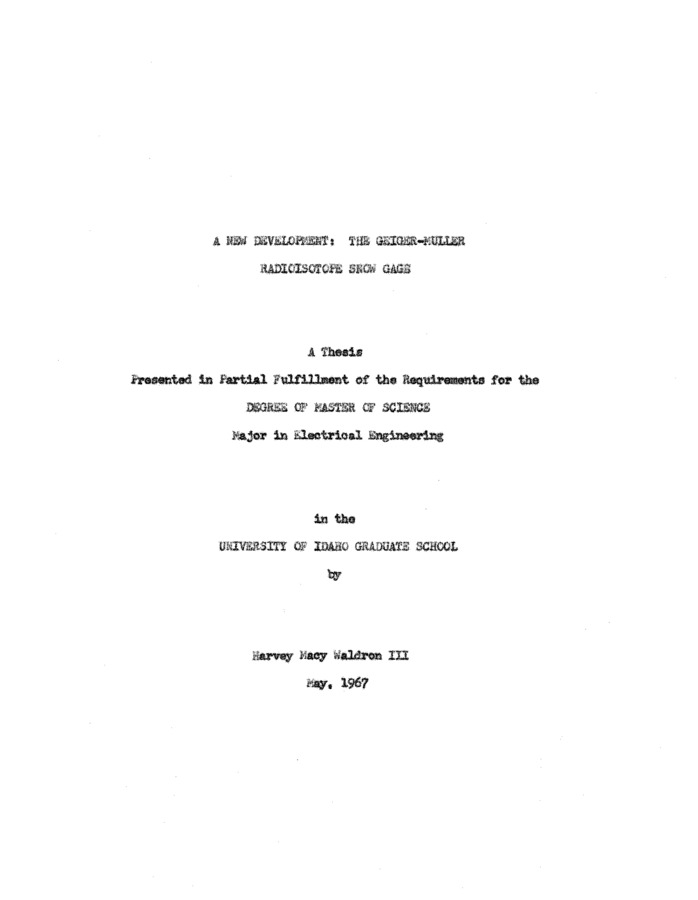PDF
New development: the Geiger-Muller radioisotope snow gage Item Info
- Title:
- New development: the Geiger-Muller radioisotope snow gage
- Authors:
- Waldron III, Harvey Macy
- Contributors:
- Idaho Water Resources Research Institute; IWRRI
- Date:
- 1967-05
- Description:
- Since about 1947, the use of radioactive isotopes has been known to be adaptable to the measurement of water contained in snow packs. Early investigations of these measurement techniques were unsuccessful because the Geiger-Muller detector, the detector readily available at that time, is a device incapable of energy discrimination. Energy discrimination is achievable by the use of scintillation detectors resulting in the present use of these devices as radiation snow gages. However, the scintillation systems have the disadvantages of high cost and complex maintenance as compared to Geiger-Muller systems. Mechanical energy discrimination, using collimation techniques, makes possible use of the non-energy discriminant Geiger-Muller systems for snow gaging. This paper discusses such a system that has been developed and tested. Design emphasis is placed on energy discrimination and electronic dead-time correction methods. Laboratory and field test data are presented to show predictable performance characteristics. All evidence to date indicates that the Geiger-Muller snow gage may be preferable, considering the combined aspects of accuracy and costs, to either the scintillation snow gage or the pressure pillow. A-006-IDA.
- Subjects:
- radioactive snow gages
- Source:
- Idaho Water Resources Research Institute, University of Idaho
- Identifier:
- IWRRI Number 196705
- Publisher:
- Idaho Water Resources Research Institute, University of Idaho
- Contributing Institution:
- University of Idaho
- Type:
- Text
- Format:
- application/pdf
- Cataloger:
- Jodi Haire
- Date Digitized:
- 2008-09-11
- Language:
- eng
Source
- Preferred Citation:
- "New development: the Geiger-Muller radioisotope snow gage", Idaho Waters Digital Library, University of Idaho Library Digital Collections, https://www.lib.uidaho.edu/digital/iwdl/items/iwdl-196705.html
Rights
- Rights:
- In copyright, educational use permitted. Educational use includes non-commercial reproduction of text and images in materials for teaching and research purposes. For other contexts beyond fair use, including digital reproduction, please contact the University of Idaho Library Special Collections and Archives Department at libspec@uidaho.edu. The University of Idaho Library is not liable for any violations of the law by users.
- Standardized Rights:
- http://rightsstatements.org/vocab/InC-EDU/1.0/

